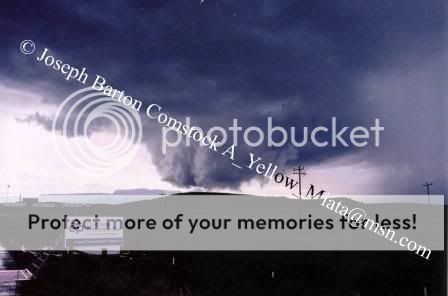Lori Meyer
My brother-in-law is certain that hills and tornadoes are not compatible with one another. He studied meteorology a bit in the air force; however, he does not know what he is talking about. We had lots of fun going back and forth with one another on the subject. The only picture I could find including hills and a tornado was in Alaska and the photo appears to only be a funnel; although, it was reported as a tornado at one point. If anyone has a photo, or knows where one might be, including a tornado in a hilly region, I would be very thankful.



